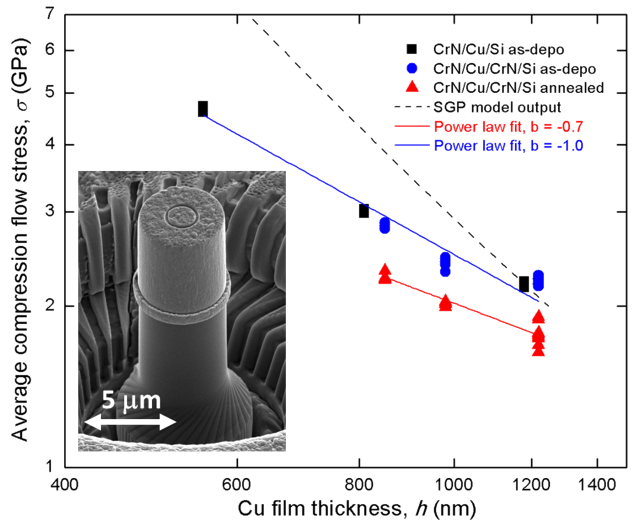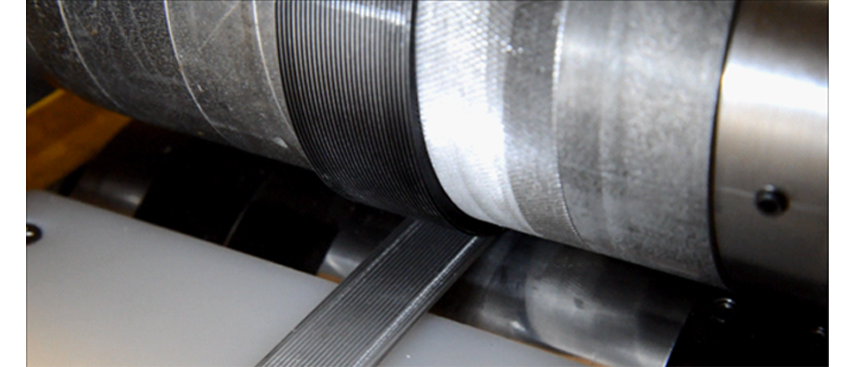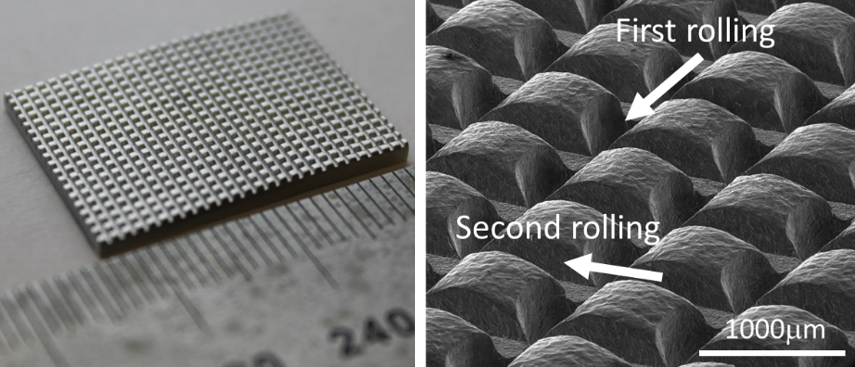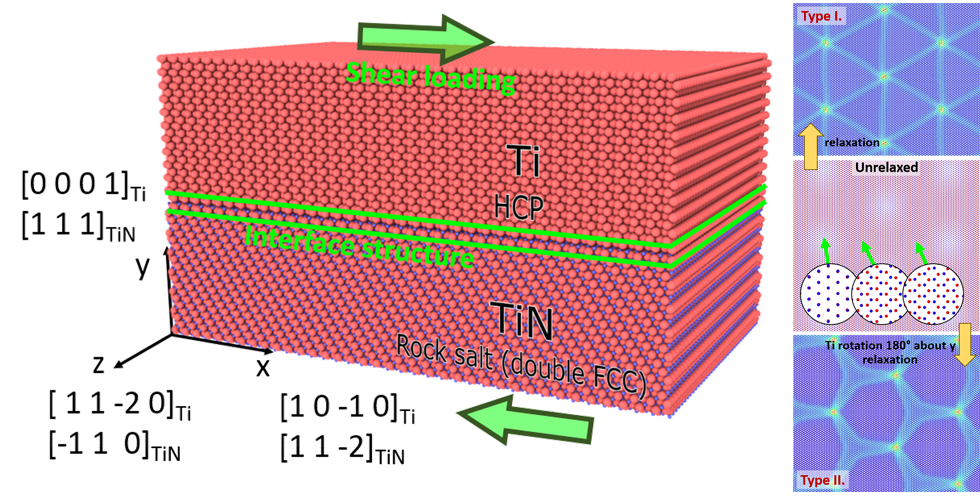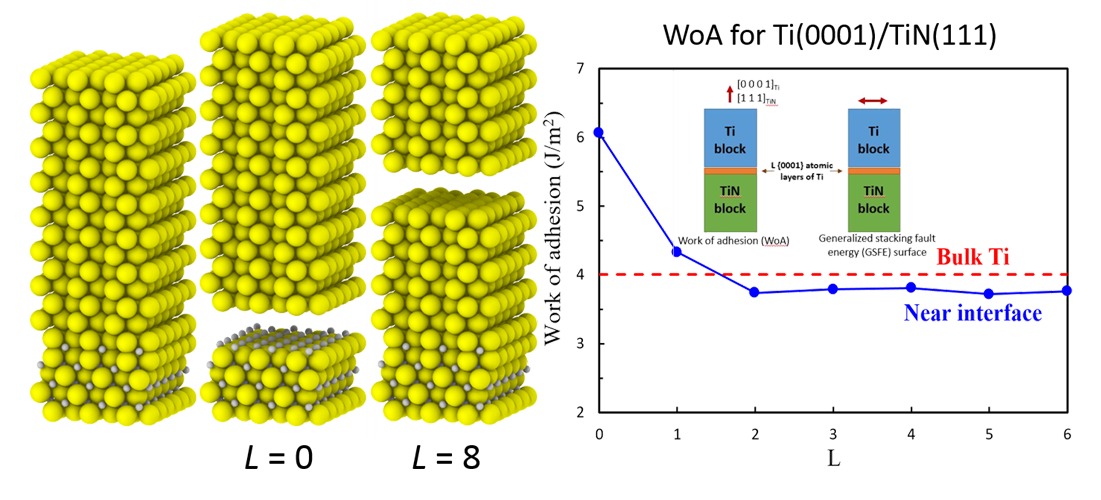Science & Technology Thrust 1 (STT1)
Multiscale Metal Forming and Replication-Based Manufacturing
Research Objectives of STT1
- Characterize and understand deformation and microstructural length scale effects.
- Measure and understand solid/solid interfacial mechanical integrity to engineer high-integrity interfaces.
- Illuminate microstructural length-scale effects via Model-Make-Measure-Validate (M3V) approach combining experimentation with multiscale modeling/simulation.
-
Demonstrate high-throughput fabrication technologies with relevant structures/devices for various engineering applications.
STT1 Challenges
An incomplete understanding of:
- Mechanical size effects as the characteristic dimension of plastic deformation approaches the regime where materials’ mechanical mechanical responses exhibit a strong length scale dependence.
- Additional size effects as the characteristic dimension of deformation approaches the microstructural length scale of the material.
- Engineered interfaces between coatings and substrates in coated forming tools.
Research and Demonstration Project Examples
Experiments Exploring Scale Effects On The Mechanical Strength of Interfaces
Test pillars bearing ceramic-metal interfaces (CrN - Cu film - Si) are milled using a Focused-Ion-Beam (FIB) in two configurations; one for compression (lower-left) and one for shear (lower-right) loading tests. Load is applied using a nano-indenter (top-left) through a diamond punch (top-right), also micromilled using FIB.
Mu et al., MRS Comm. (2016).
Understanding Size Effects on Plasticity
Results if confined plastic flow experiments of Cu films in shear and normal compression reveal that flow stress is independent of Cu film texture (as-deposited specimens), and that changes in microstructure change both the flow stress and its film thickness dependence. Disagreement between data and present Strain Gradient Plasticity (SGP) models calls for SGP model improvement and more experiments from single to poly-crystals with controlled grain size.
Mu et al., MRS Comm. (2014; 2016); Extreme Mech. Lett. (2014).
Average compression flow stress vs. Copper layer thickness.
Average shear flow stress vs. Copper layer thickness.
Demonstrating High-Throughput Micromanufacturing Technologies
Instrumented microscale roll molding (left) allows metal-based microscale structures to be manufactured using a continuous roll-to-roll embossing in printing fashion creating roll-molded one-dimensional and two-dimensional (right) aluminum micro fin array structures.
J. Micromechanics & Microengineering, (2017).
Instrumented roll mill.
Two-Dimensional array structures.
Metal/Ceramic Interfacial Shear Failure at Critical Strain
The shear response of the metal/ceramic interface is modeled in Molecular Dynamics (MD) using a Ti-TiN bilayer crystal system (top-left) with Modified Embedded Atom Method (MEAM) potential.
The structure of the interface is studied, and its response to shear loading is also considered by subjecting the bicrystal to a pure shear loading (top-left).
It is demonstrated that the structure of the Misfit Dislocation Network (MDN) depends on the orientation of Ti in the crystal structure.
MD simulations on the semi-coherent Ti(0001)/TiN(111) interfaces show that presence of the metal/ceramic chemical interface leads to mechanically weaker metal layers close to, but not at, the chemical interface (bottom). Interfacial shear failure is associated with the motion of the MDN with low shear strength.
Zhang et al., Acta Mater. (2017)
Computational MD domain (left) and Ti orientation configurations (right).
Interfacial shear molecular-dynamics simulation results.
DFT Calculations on Coherent Interfaces Inform MD Predictions
DFT calculations of the Work of Adhesion (WoA) for the fully coherent Ti(0001)/TiN(111) system indicate that cohesive strength of Ti (0001) planes close to the Ti/TiN chemical interface is below that for bulk Ti (top).
DFT calculations of the Generalized Stacking Fault Energy (GSFE) surface for the fully coherent Ti(0001)/TiN(111) system show that the weakest interfacial shear strength occurs AWAY from the true chemical interface. The smallest variation in GSFE occurs when L = 3, smaller than in bulk Ti. Preliminary results show that Ti/VN has a smaller variation in GSFE than Ti/TiN. This remains to be tested experimentally.
Zhang et al., Acta Mater. (2017)


